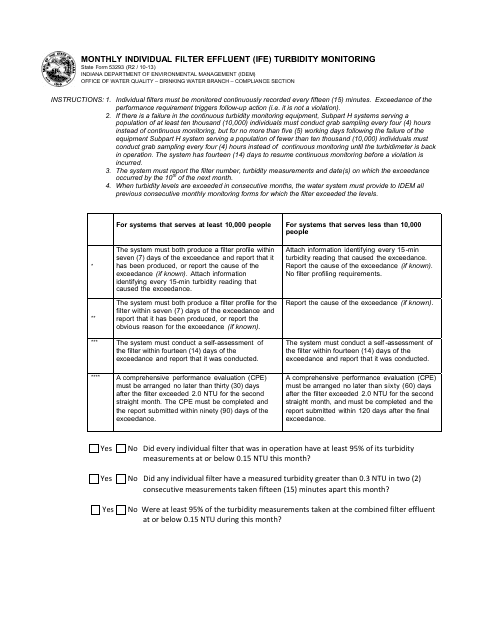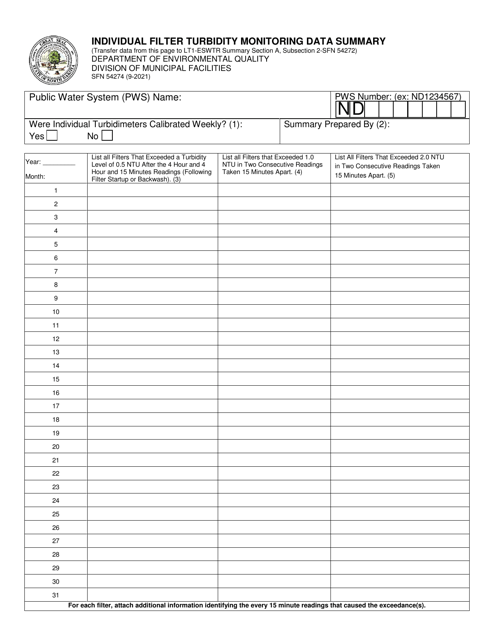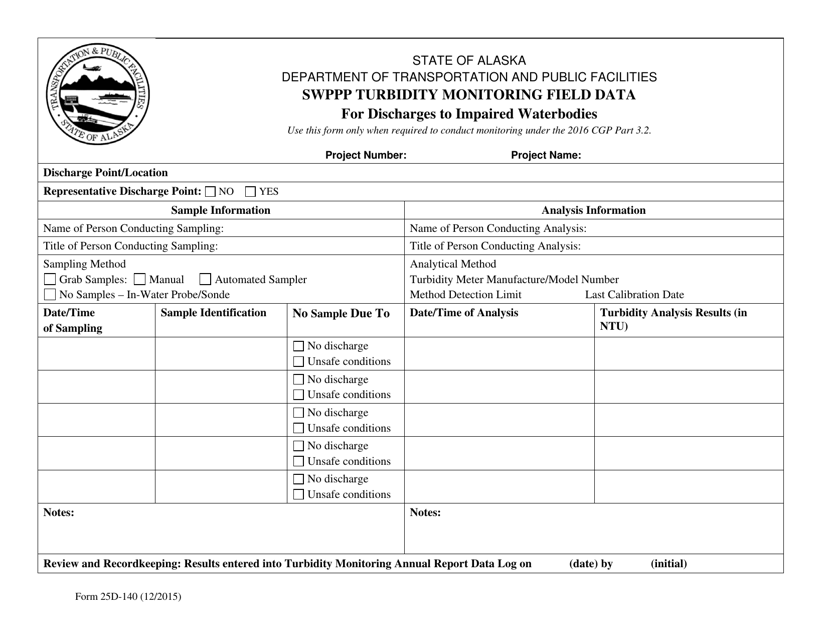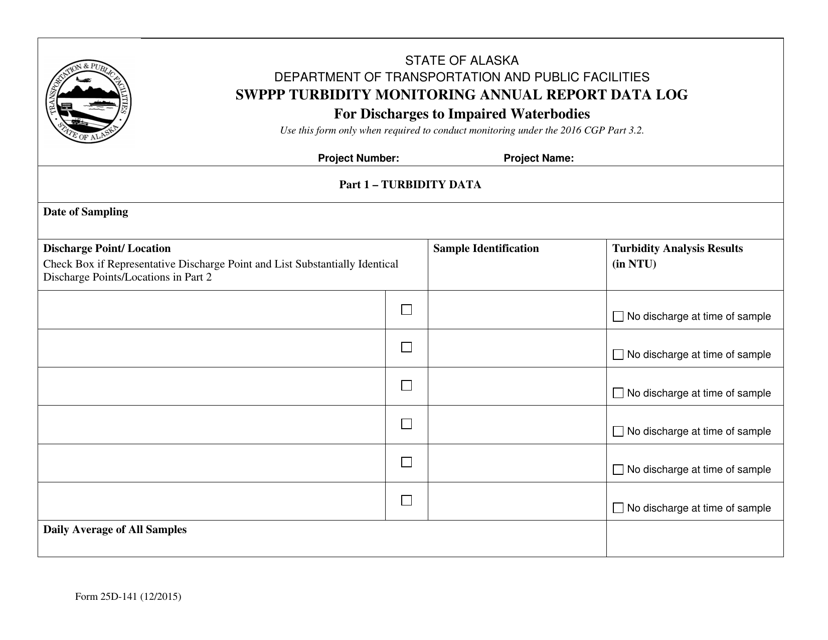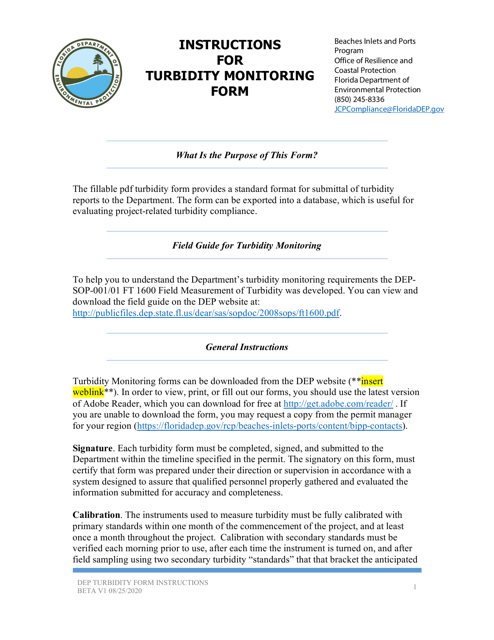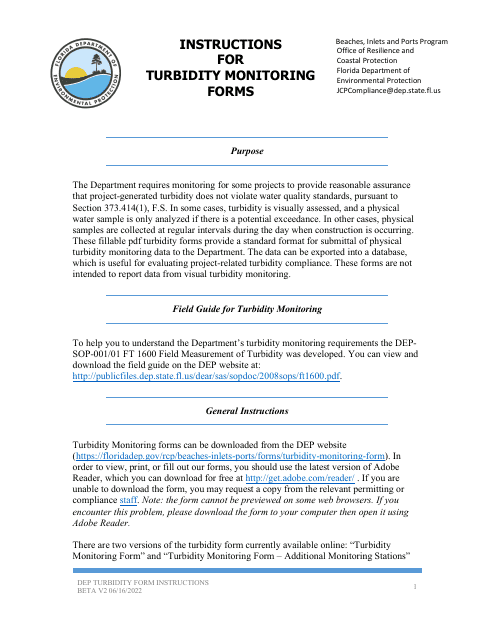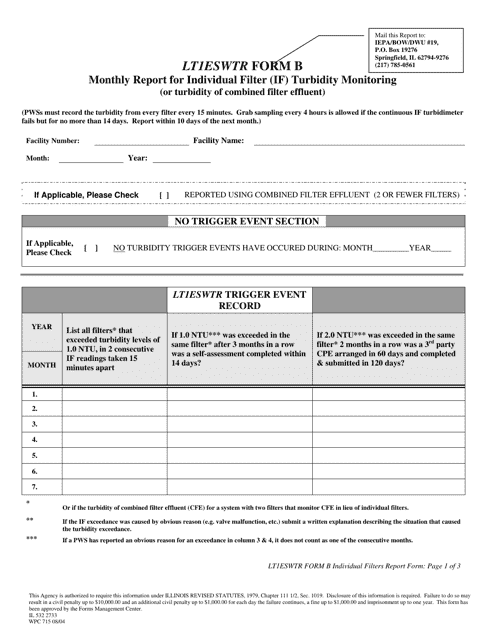Turbidity Monitoring Templates
Turbidity Monitoring: Ensuring Water Quality
Turbidity monitoring is a crucial aspect of maintaining water quality and ensuring the safety of our environment and communities. Turbidity refers to the cloudiness or haziness of a liquid caused by suspended particles. Monitoring turbidity levels allows us to assess the quality of water sources, identify potential pollutants, and take necessary actions to preserve and protect our water resources.
Our turbidity monitoring program includes a diverse range of documents tailored to meet the specific regulations and requirements of different states. These documents are designed to streamline the monitoring process, provide accurate and standardized measurements, and facilitate easy reporting.
One such document is the State Form 53293, which is used by the state of Indiana for monthly individual filter effluent (IFE) turbidity monitoring. The Form 25D-141, required in Alaska, serves as a Swppp turbidity monitoring annual report data log for discharges to impaired waterbodies. In Florida, the Instructions for Turbidity Monitoring Form and the Turbidity Monitoring Form for Additional Monitoring Stations assist in ensuring comprehensive monitoring across the state. Illinois utilizes Form B (WPC715; IL532 2733), a monthly report specifically designed for individual filter (IF) turbidity monitoring for small surface water systems.
Our turbidity monitoring documents collection, sometimes referred to as turbidity measurement forms or water clarity assessment materials, provides a comprehensive solution for organizations and agencies responsible for monitoring and managing water quality. These documents are designed to comply with relevant regulations, simplify data collection, and streamline reporting processes. They enable professionals in the field to track changes in turbidity levels, identify potential sources of pollution, and implement effective measures to maintain water quality.
With our turbidity monitoring documents, environmental agencies, water treatment facilities, and businesses can ensure that they are meeting regulatory requirements and contributing to the preservation of our valuable water resources.
Documents:
9
This form is used for monthly monitoring of the turbidity levels in individual filter effluent (IFE) in Indiana.
This form is used for collecting and reporting field data on turbidity monitoring for discharges to impaired waterbodies in Alaska.
This form is used for monitoring and measuring turbidity levels in Florida's water systems. It provides instructions on how to properly conduct turbidity tests and record the results.
This form is used for monitoring the level of turbidity in water bodies in Florida. It provides instructions on how to accurately measure and record turbidity data.
This document is used for monitoring and recording the turbidity levels at additional monitoring stations in Florida.

